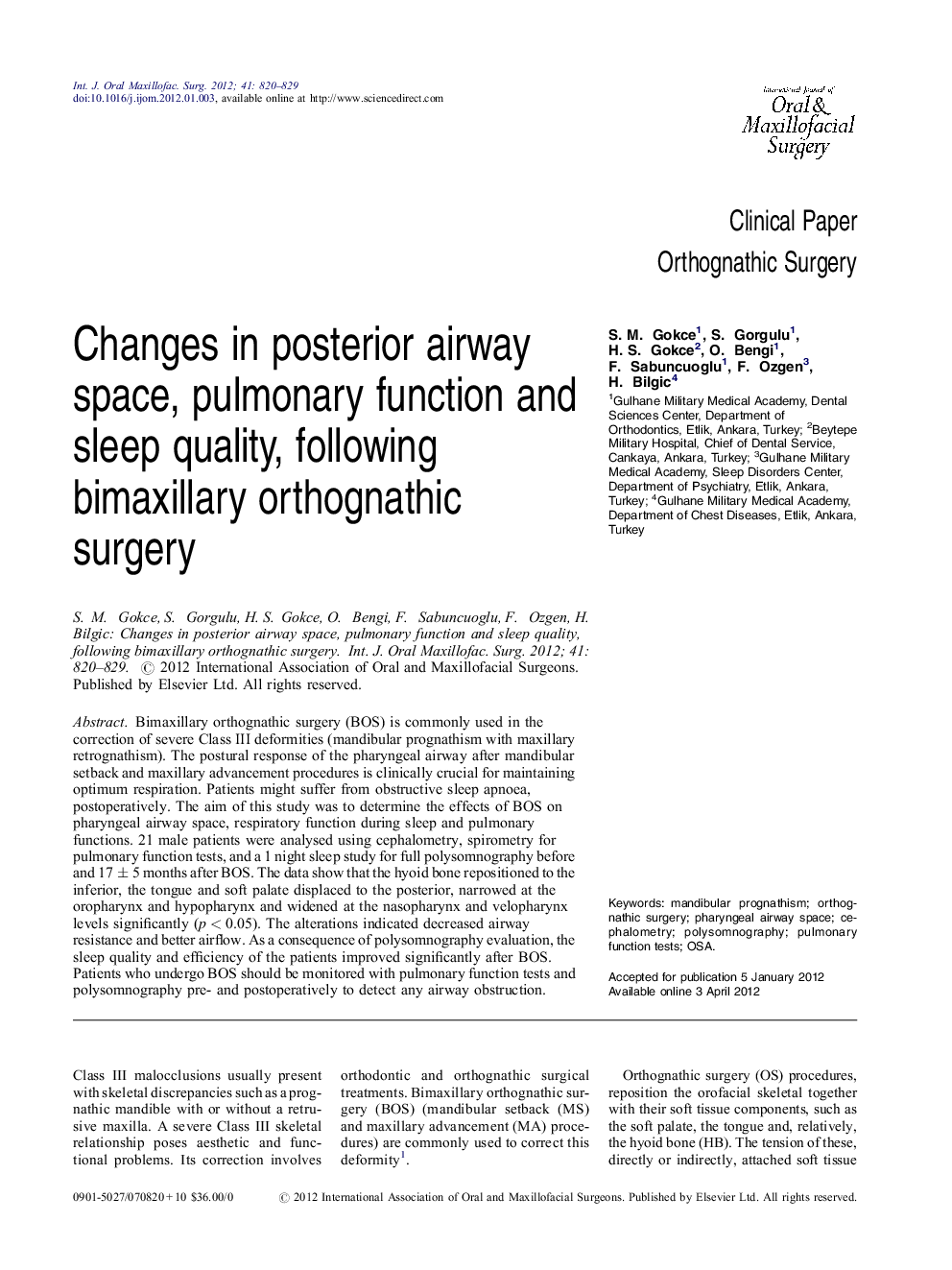| Article ID | Journal | Published Year | Pages | File Type |
|---|---|---|---|---|
| 3133114 | International Journal of Oral and Maxillofacial Surgery | 2012 | 10 Pages |
Bimaxillary orthognathic surgery (BOS) is commonly used in the correction of severe Class III deformities (mandibular prognathism with maxillary retrognathism). The postural response of the pharyngeal airway after mandibular setback and maxillary advancement procedures is clinically crucial for maintaining optimum respiration. Patients might suffer from obstructive sleep apnoea, postoperatively. The aim of this study was to determine the effects of BOS on pharyngeal airway space, respiratory function during sleep and pulmonary functions. 21 male patients were analysed using cephalometry, spirometry for pulmonary function tests, and a 1 night sleep study for full polysomnography before and 17 ± 5 months after BOS. The data show that the hyoid bone repositioned to the inferior, the tongue and soft palate displaced to the posterior, narrowed at the oropharynx and hypopharynx and widened at the nasopharynx and velopharynx levels significantly (p < 0.05). The alterations indicated decreased airway resistance and better airflow. As a consequence of polysomnography evaluation, the sleep quality and efficiency of the patients improved significantly after BOS. Patients who undergo BOS should be monitored with pulmonary function tests and polysomnography pre- and postoperatively to detect any airway obstruction.
